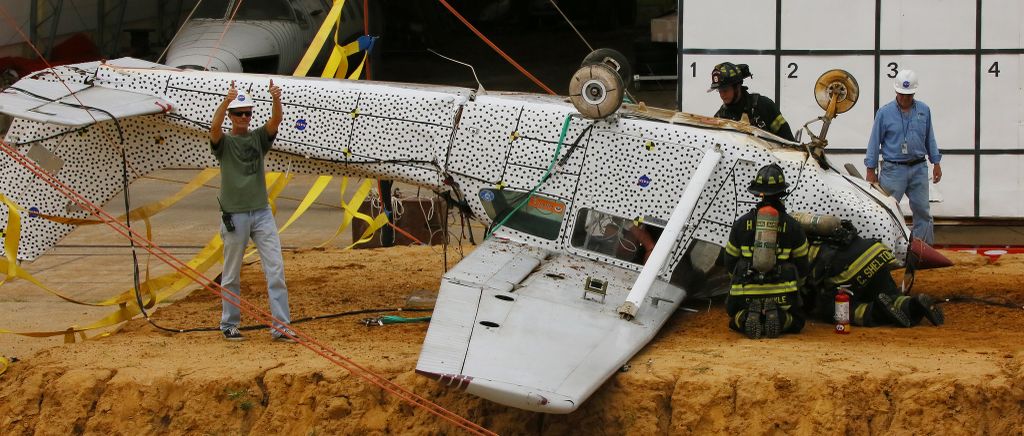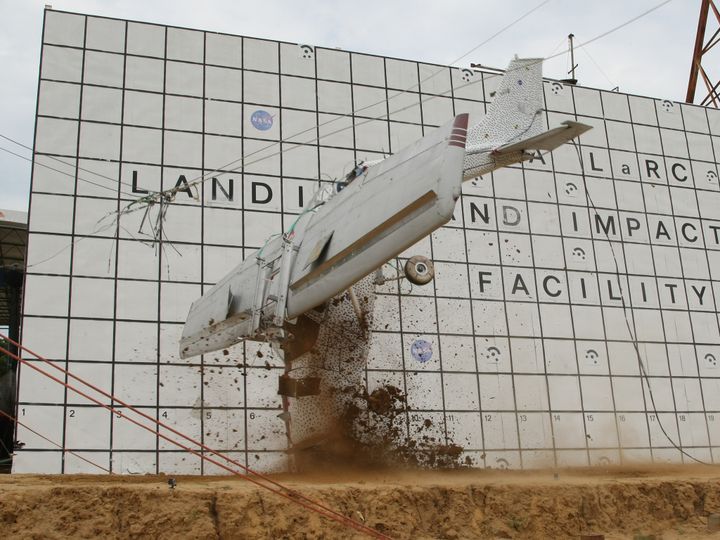
I sure wouldn't want to be inside that airplane, but this drop test was supposed to improve my safety. In quick succession this summer, NASA did three of these crashes using real aircraft, to see how they would behave. Inside this particular plane were a couple of crash test dummies and some emergency locator transmitters (ELTs), the main objective of the test.
NASA is perhaps best known for its space exploration, but the agency also has an aviation branch that looks at everything from "green" fuels to making airplanes more efficient to improving aircraft safety. This test dropped the plane from 100 feet in front of a television camera and even the guy who used to own the airplane (who was a bit sad to see it go, NASA reported).
"It was a pretty severe crash," said Lisa Mazzuca, NASA's search and rescue mission manager, in a statement. "That's the whole idea behind this — severe but survivable. Those two passengers are going to need some help."
Think about a typical small plane that crashes. If the occupants are unlucky, it will arrive in an isolated area that is hard to survey, such as mountainous terrain or forests. That's where the ELTs come in. They're supposed to serve as beacons for rescuers to find the aircraft quickly. But sometimes these transmitters are also damaged in the crash.
"One factor being measured in the tests is how the ELT systems are installed," NASA wrote in a previous press release on July 29.
"The systems are made from two main components. A brick-sized beacon is typically affixed to the interior of the aircraft’s fuselage. An antenna is mounted to the outside of the airplane. Once the beacon and its sensors detect signs of a crash, it automatically transmits location information through the antenna to a satellite. That information is then relayed to emergency personnel on the ground."

Officials examine the Cessna 172 plane after its drop test on Aug. 26, 2015. Credit: NASA/David C. Bowman
Now that the flashy press release stuff is over, the real test of analyzing the ELTs will begin. A typical aviation crash takes at least months to investigate, so we can expect the same kind of timeline to see how well the ELTs performed. From there, NASA will need to figure out what recommendations it can implement to make them perform better. And that could even lead to more testing in the future.
What are your ideas to improve aviation safety for passengers? Let us know by launching a HeroX challenge.
Top image: A Cessna 172 is dropped for science on Aug. 26, 2015. Credit: NASA








